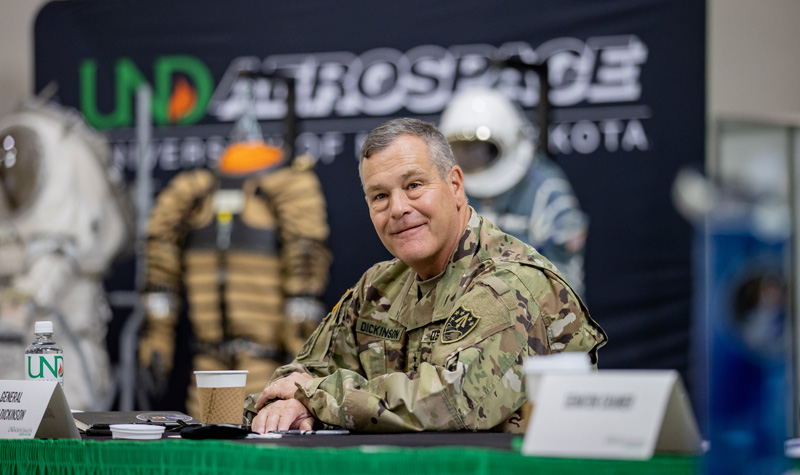Team Focuses on Integration of UAS
By Shane Becker The Dakota Student Posted on Nov. 21, 2006 URL:dakotastudent.com
In an effort to promote shared skies, UND Aerospace program researcher Benjamin Trapnell and Douglas Marshall of the UND Graduate Program, were awarded a $1 million contract from the U.S. Department of Defense (DoD) to work on an unmanned aircraft systems (UAS) project. The research will focus on how and where UAS systems will be developed, tested and deployed.
Trapnell explained the project: “(We) have been conducting research with the Center of Excellence for General Aviation Research on the regulatory issues surrounding UAS as well as detect, sense and avoid. We both serve on industry panels working to write standards for the emerging UAS industry – working very closely with the FAA to solve the regulatory issues it faces.”
This new technology will enable an unmanned aircraft to detect, characterize and fly around, or avoid, potential hazards in the air, such as a parachutist, a flock of birds or other aircraft. While the two researchers are hopeful that the project will take only two years, Trapnell said three years is a more likely timeframe.
It remains to be seen whether the UAS system will replace a great number of pilots for many of their missions. Trapnell believes that they may replace human pilots to a certain degree but for the most part would be used for extended surveillance and the “dull, dirty and dangerous jobs” that most pilots won’t miss.
“My best guess is that unmanned aircraft will augment missions flown by manned aircraft or will conduct missions that are better suited for unmanned aircraft,” Trapnell said.
Trapnell was adamant in the inclusion of his team, who have equal right to the recognition that this contract brings to the department. In addition to Trapnell and Marshall, UND Porfessor Leon Osborne also helped secure the contract.
“The radar systems we propose to use for our ground-based sense and avoid system are taken from the weather community,” Trapnell said.
The DoD and the civil unmanned aircraft industry stand to benefit from this new technology, which is key to the use of unmanned aircrafts.
“With this system, manned and unmanned aircraft would be able to operate seamlessly within the same airspace,” Trapnell said.


